
Editor's Note: This story originally appeared on The Penny Hoarder.
Owning a home is much more than just making a mortgage payment. Just like you do for your car, you must maintain a home to keep things running smoothly.
Some home maintenance tasks are easy to do on your own, but a few things require the expertise of a professional.
That means you will need to have a plan to pay for home maintenance projects. Keep in mind, too, that maintenance is usually cheaper than repairs and replacements. It’s a good idea to put away $200 a month for routine maintenance but be prepared for something bigger every few years — like having the house painted.
“It is very important to maintain the value of your property. To me, routine maintenance is relatively inexpensive but the damage caused by lack of it can be very expensive,” said home inspector John Wanninger. He and his INSPECTIX team in Nebraska have inspected more than 30,000 homes.
Wanninger suggests several home maintenance projects you should do periodically.
Not every expert agrees on the frequency of some of these tasks, and where you live and its climate also make a difference.
Home Maintenance Priorities

Keep your eyes on these four areas of maintenance and your home should be in good shape:
- Preventing Moisture Problems
- Maintaining Appliances and Equipment
- Kitchen Upkeep
- Routine Exterior Maintenance
Preventing Moisture Problems
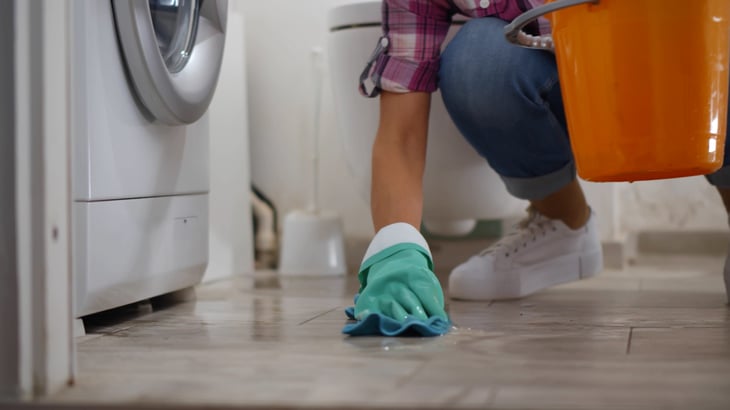
We need water to live, but it can also be a major enemy when it shows up in places it shouldn’t. Any issues with water should be addressed as soon as possible.
Data from Travelers Insurance says 19% of insurance claims from homeowners during the winter months are for weather-related water damage.
1. Check Your Gutters
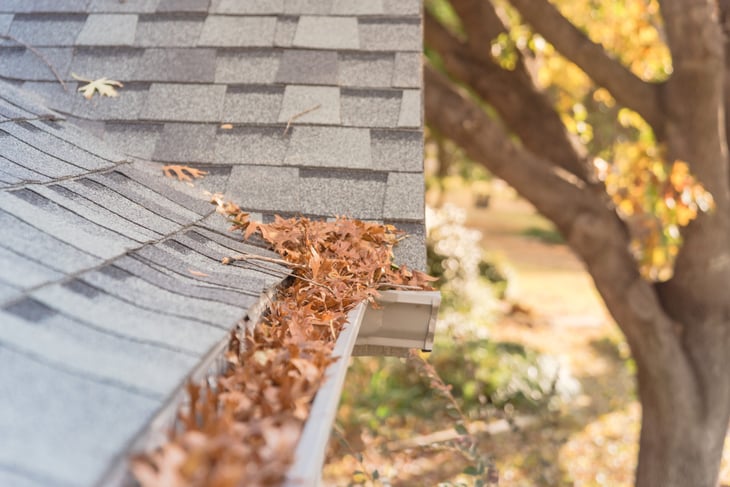
A home’s gutter system is designed to move water from the roof to the ground without making any stops in between.
Wanninger suggests at least once a year, before your area’s rainy or snowy seasons, checking your gutters and drainpipes to make sure water is flowing freely and there are no blockages.
Remove any leaves or debris that is inhibiting the flow.
Once it’s cold, if you see icicles coming from the roof or gutters, your gutters might be backed up.
Do not do this task alone. Make sure someone is spotting you on the ladder.
If you choose to hire someone, HomeGuide says the average cost of gutter cleaning is $150.
2. Clear the Snow
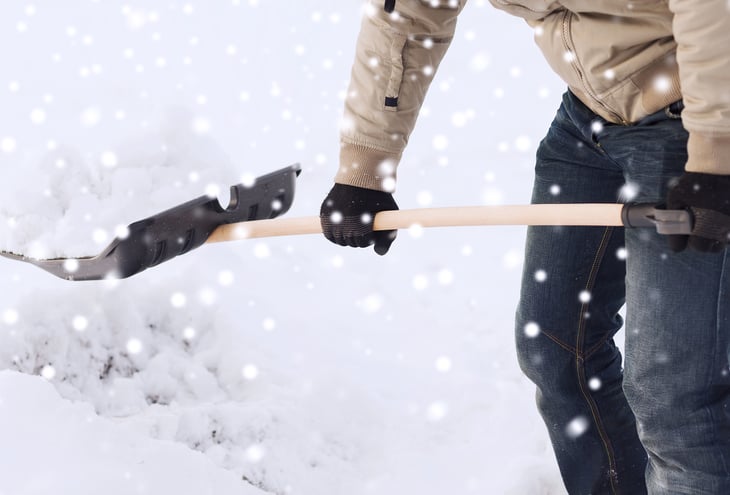
If there’s snow already on your roof from one storm, clear it before more snow falls. The additional weight could cause problems.
A roof rake can help you pull the snow down while you’re still safe on the ground.
3. Is the Sump Pump Working?
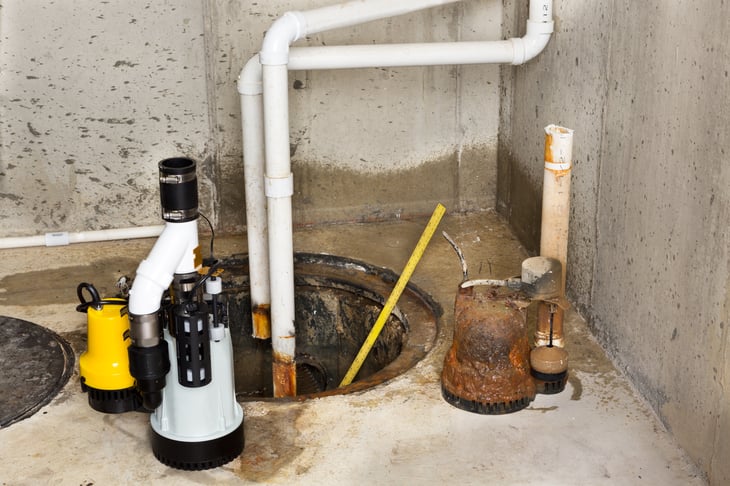
In the midst of a rainstorm is a bad time to find out your basement sump pump isn’t working.
“You should test your sump pump every month, especially during the wet seasons, to make sure that the pump is activating and the float is working,” Wanninger said.
To check the sump pump, make sure it is switched on, pour some water into the pit area to make sure it starts properly. Don’t forget to check the system’s backup battery also.
4. Water Heater Warnings
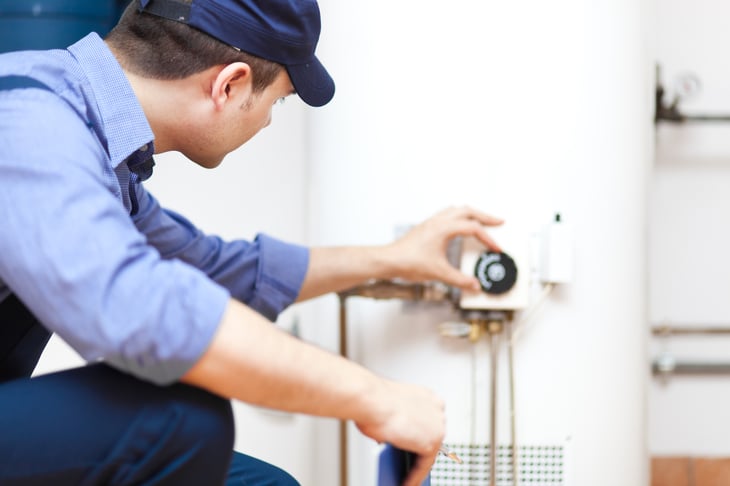
Many experts say it’s important to drain your tank water heater annually to remove sediment that may have settled in the bottom. Usually this is done with a long hose from the spigot to a sink or shower drain or an outdoor area.
Wanninger has a warning about this.
“You have to start it from the time that it’s new and that will keep rust and corrosion that would normally build up in the bottom of your water heater from occurring,” he said.
Draining a water heater for the first time two years, more or less, after you’ve installed it could result in trouble. The rust and debris that has built up could clog the water heater’s spigot and prevent you from closing it. This could cause a permanent leak or, worse, a flood in your home from the water in the tank.
5. Check for Bathroom Leaks
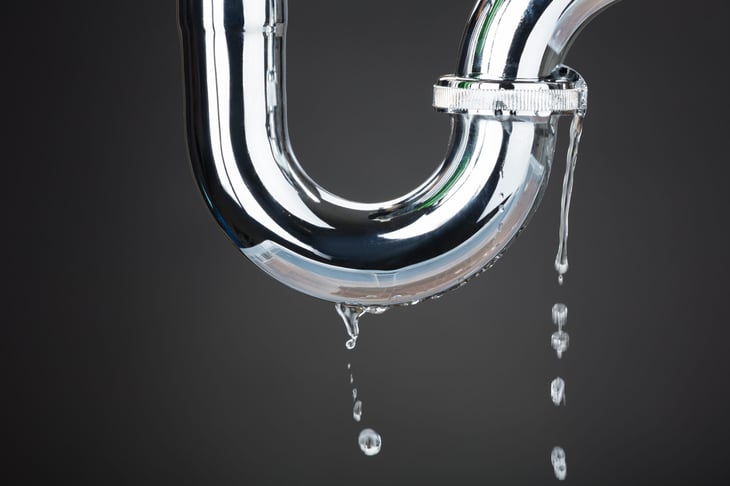
To make sure everything is OK in each bathroom, periodically flush toilets and run water through faucets and drains you don’t use often.
Check for any leaks around toilets and under sinks and that they don’t wobble.
Make sure caulk and grout are still intact in bathtubs, showers and behind the sinks.
“It prevents water from getting behind the wall and if water sits there, it will deteriorate out the wall and eventually cause a very expensive repair,” Wanninger warned.
6. Get Septic Tank Inspection
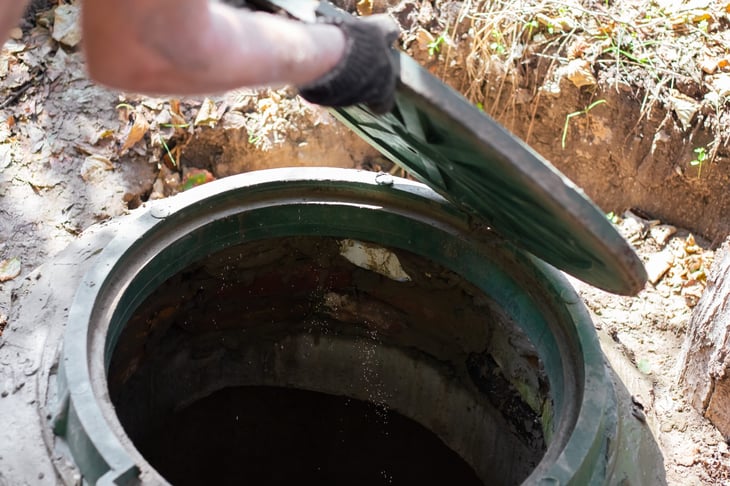
A professional should inspect your septic tank at least every three years and pump it out every three to five years, according to the Environmental Protection Agency.
Unfortunately, this is something many people don’t do, which could lead to the system not working properly or backing up.
If your system has electrical float switches, pumps, or mechanical components, someone should inspect it annually.
Cleaning and pumping a septic tank costs between $250 and $895, with most people spending about $375, according to HomeGuide.
7. Check Irrigation Systems
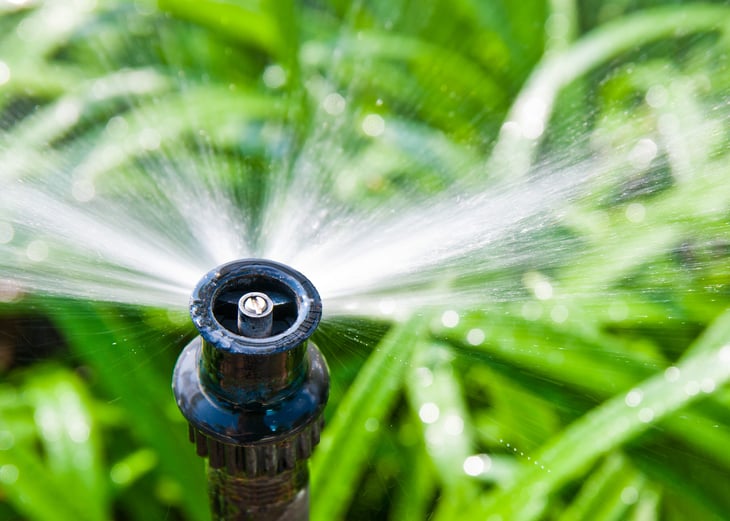
When working properly, lawn irrigation systems keep grass and plants lush and beautiful.
Malfunctioning systems can cause lots of problems besides just a dry lawn.
Wanninger suggested an annual check to make sure sprinkler heads are working properly and watering where they are supposed to. He said many homes he inspects have sprinklers hitting the house which can cause rotting and other damage.
Broken or leaking heads can cause high water bills because the water has to go somewhere if the heads are not coming out of the ground.
HomeGuide says replacing a sprinkler head costs between $65-$90 for a professional and about $2-$12 if you do it yourself.
Maintaining Appliances and Equipment
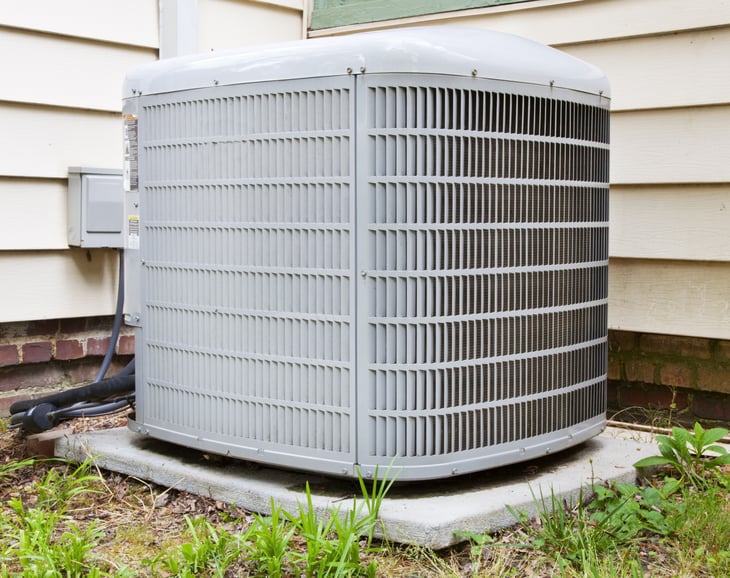
We spend a lot on HVAC systems, washing machines and dryers. Periodic maintenance can help keep these items running well.
8. Do Annual HVAC Maintenance
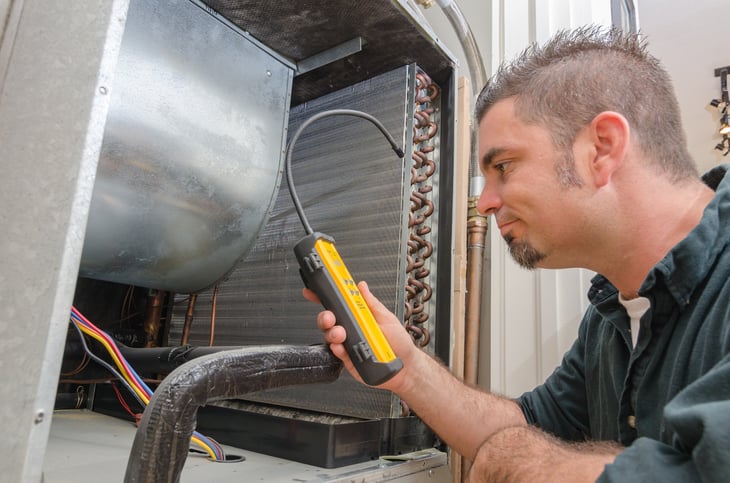
We rely on our heating, ventilation, and air conditioning system to keep us cool in the summer and warm in the winter.
It’s important to change the air filters monthly and have a routine service call to check to make sure everything is working properly.
An annual maintenance call costs about $150.
Make sure there is a clear area around your outside compressor and that there are no leaves or debris inside the unit.
9. Keep Laundry Room in Working Order

In the laundry room, check the connections between the water source and the washing machine to make sure they are tight.
Wanninger said he sees lots of floor and wall damage because of loose connections.
After every few loads in the dryer, make sure to clean the lint filter.
Also, every year or so (more if you do a lot of laundry) it’s a good idea to hire a professional to clean the dryer vent.
A clogged dryer vent can keep your dryer from working properly and could even cause a fire.
A professional dryer vent cleaning with either a vacuum, brush, or a combination of both costs about an average of $150, according to Fixr.
Kitchen Upkeep
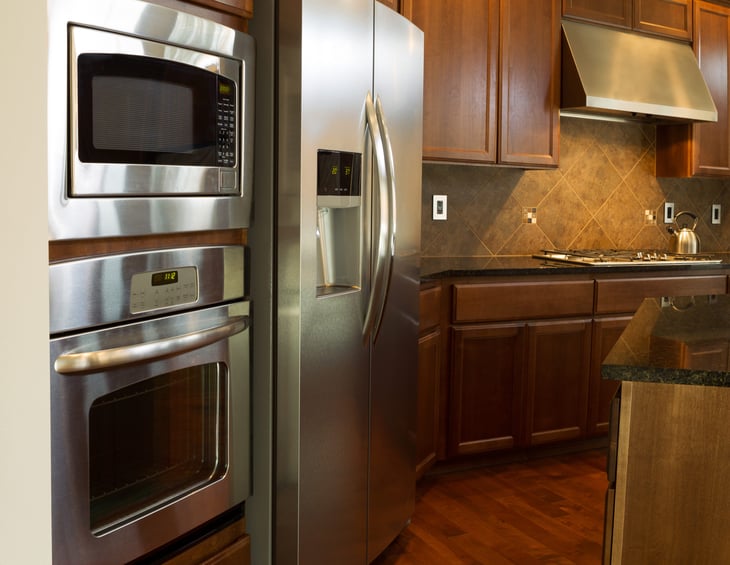
Your kitchen appliances can use a little TLC every now and then.
Making sure they are in tip-top shape will keep them working for years and ensure you get your money out of them.
10. Replace Water Filters

If you have a water or ice dispenser, you probably have a filter that removes impurities to keep your water and ice tasting good.
Your owner’s manual will tell you how often to replace them, but usually it is about every six months. New filters can cost around $50.
11. Vacuum the Refrigerator Coil
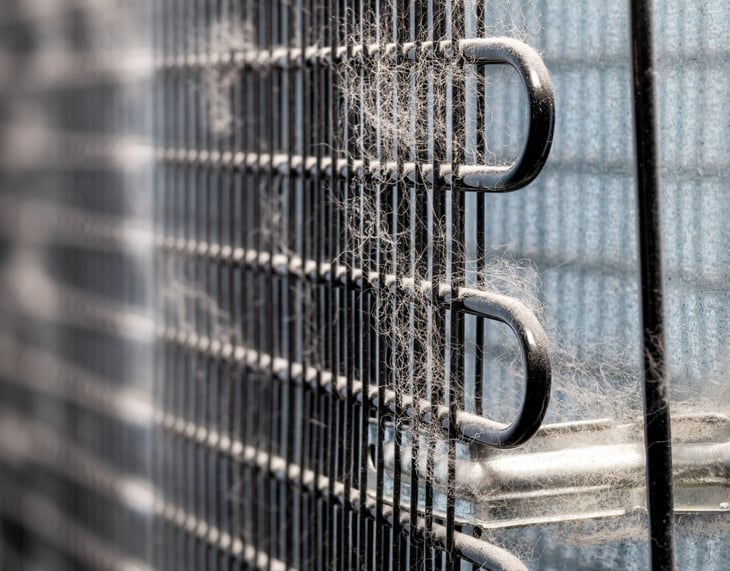
The coils of your refrigerator can get dirty, which could cause your refrigerator to need more electricity to keep it running. Vacuuming them periodically can help keep them clean.
12. Clean Range Hood Filter
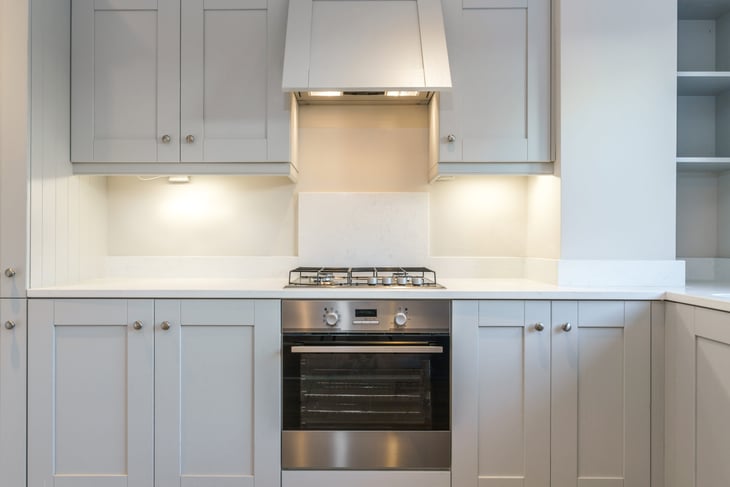
And the same for an over-the-range microwave. A grease buildup on these can keep the fan from working property or can leave a film on appliances and walls.
13. Don’t Get Shocked
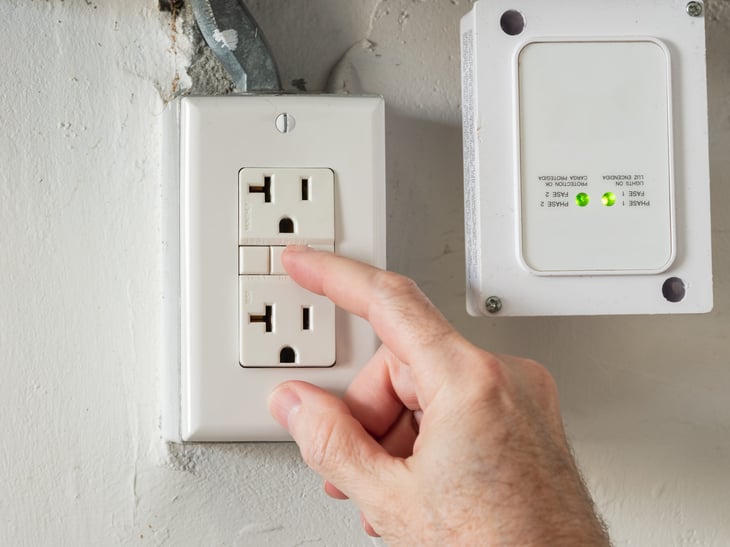
Make sure your ground fault interrupters work properly. GFIs protect you from getting an electrical shock, especially when an electrical outlet is close to a water source. Check all outlets and switches throughout the house.
Routine Exterior Maintenance
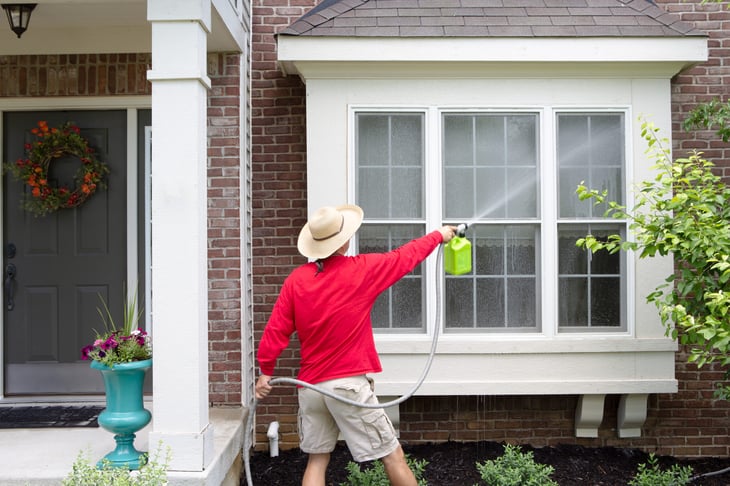
While it’s important to pay attention to many things inside your house, don’t ignore the outside.
Several things on the exterior also require maintenance, and make sure you’ve set something aside in your budget for home maintenance.
Paint alone could put a $5,000 ding in the budget.
14. Keep Dirt Away
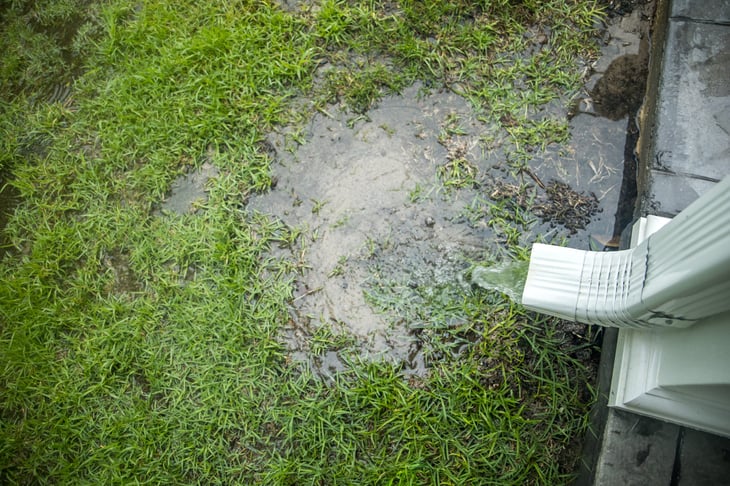
Water should drain away from the house, not toward it. This will help prevent water damage.
“The dirt around your house is referred to as backfill. When that house was built, the dirt was disturbed from its original condition,” Wanninger said. “So when you dig a foundation and backfill it, that dirt still will continue to settle for many, many years.”
He tells his clients to monitor the dirt around the house and if they notice any pooling or an area that is flat, they should build up the grade so the water drains away from the structure.
15. Check on Paint and Siding
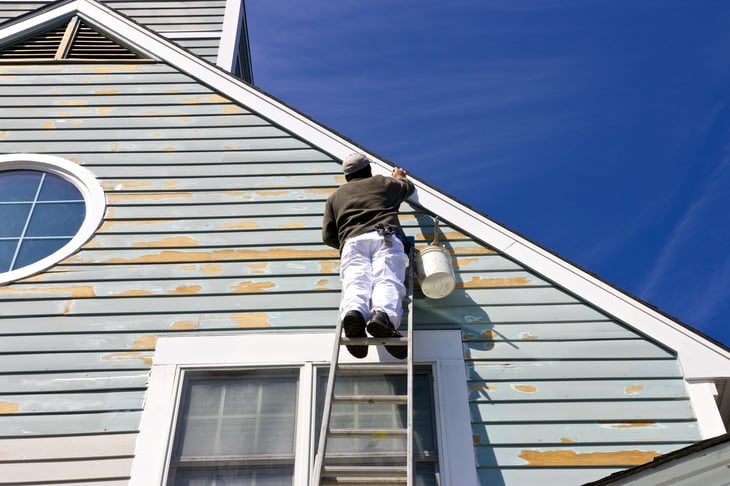
Paint does more than make your house look good. It also acts like a skin and protects the house from damage.
“The wood that we put on homes today is not weather resistant like the lumber we used to use,” Wanninger said. “That material left unpainted will deteriorate very quickly so sealing and painting the exterior of the home is extremely important. Painting a home is probably about an every five year project.”
Repainting the exterior of a house is between $1,900 and $6,900, according to HomeGuide.
Also, periodically check siding to make sure there are no cracks or soft spots that might indicate moisture got under the siding. Water damage is one of the common repair costs.
16. Maintain Exterior Caulk
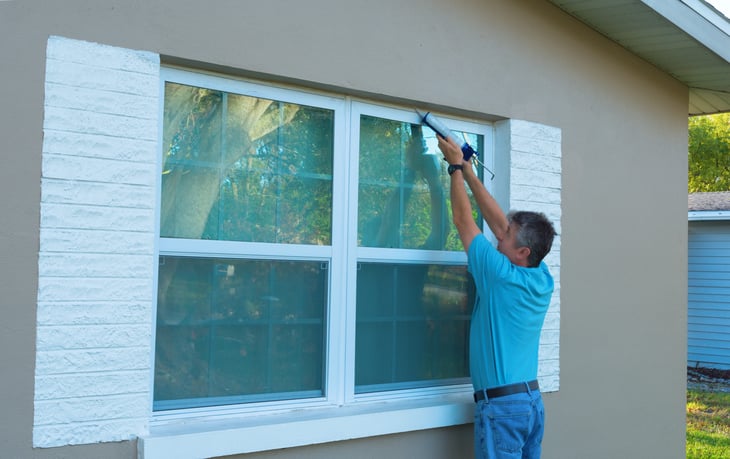
If there is no caulking around siding or window trim, look out. The lack of sealer can cause significant moisture damage to the siding and to the house structure, Wanninger warned.
Caulking is more for areas that are stationary while weatherstripping seals air gaps around windows and doors that move.
There are a wide range of weatherstripping materials available that range in price and you might need a variety to sufficiently seal everything.
Wanninger suggested annually inspecting and caulking around windows, doors, chimneys, and anything else that penetrates the exterior of the home.
If you aren’t up to the job yourself, hire a professional window maintenance company. Depending on the size of the job, it could cost about $500.
17. Inspect Fireplace and Chimney
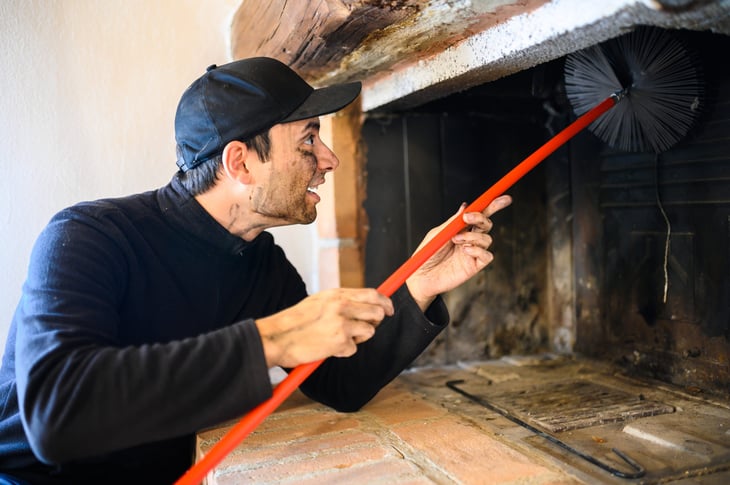
Speaking of chimneys, if you have a fireplace, make sure you annually inspect the flue and chimney. A blockage could cause dangerous gasses to go back into your home or start a fire.
The average cost of a chimney cleaning is between $149 and $340 depending the type of fireplace, HomeGuide says. An inspection is often included in the cleaning cost and is between $100 and $250 if it is not part of the cleaning service.
18. Check Roof and Support Structure
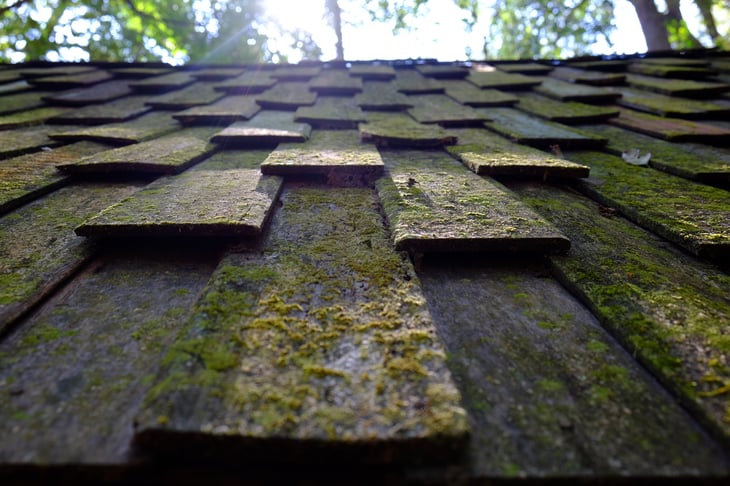
Make sure there are no dips, wear, or other signs of weakness on the roof. If you notice something, have a roofing professional take a look. It’s much better to prevent a leak than repair one.
19. Service Garage Door
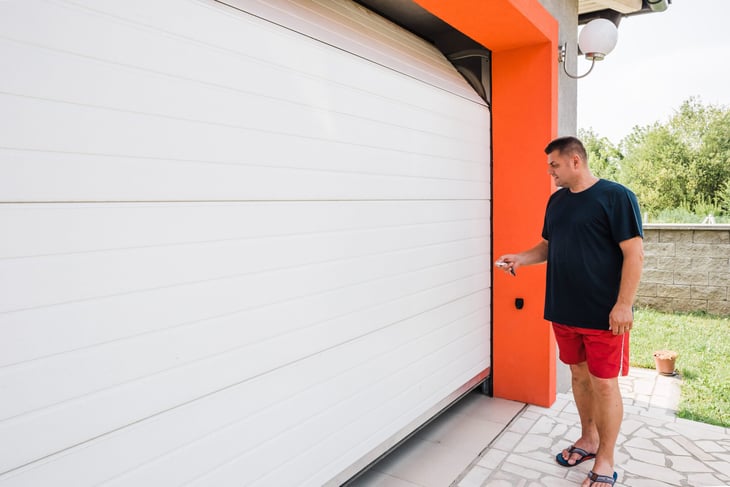
Electric garage doors are a great convenience and can last for many years.
Many garage door companies say it is important to service your electric garage door at least once a year.
Garage door maintenance often includes:
- Lubricating moving parts of the door.
- Tightening bolts and screws.
- Adjusting the tension of the spring.
- Inspecting and replacing weather stripping.
Know These Things
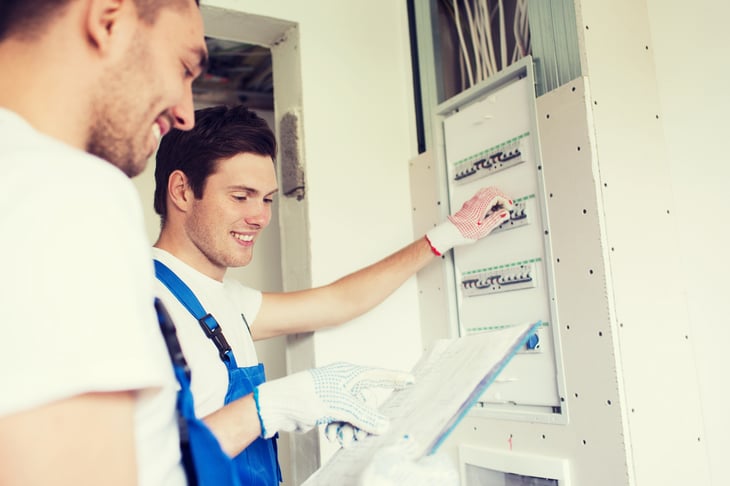
No matter what you do to maintain your home, there are a few things every person should know about where they live.
- The location of the electrical fuse/breaker box.
- The location of the main water shutoff.
- How to shut off water to toilets, sick faucets, or washing machines.
- The location of the main shutoff for heating fuel.
Wanninger said a mistake many people make is thinking because their home is new or new to them, it does not need maintenance.
“As we do inspections, we educate our clients about this maintenance right away when you move in and then you get it on a routine schedule.”
How Much Money Do You Need to Budget for Home Repairs?

Mary Bell Carlson, certified financial planner and accredited financial counselor, bought a new house and found out firsthand about the importance of home maintenance.
She advised her clients to start what she calls a life fund.
“It’s not your emergency fund because your emergency fund is for when something catastrophic happens. This is if something in the house breaks and we have to replace it. It’s for that ongoing maintenance piece that you constantly have to be feeding,” she said.
The relatively small fees for professional home maintenance or even for supplies to do it yourself add up. A $100 here, $95 there, and $150 the next month can add up to a few thousand dollars a year.
Create a Home Maintenance Fund

Carlson suggested having a home maintenance fund and putting a few dollars into it each month to pay for the types of maintenance Wanninger and others suggest.
“If you put $200 a month aside and you don’t have any home maintenance things that month, at the end of the year you’ve got $2,400 and you can kind of debit that as things come up,” she said. “You have somewhere to pull from that isn’t taking away from your monthly spending nor jeopardizing your other savings goals.”
Remember, as materials become more expensive, some preventive maintenance prices are also going up.
Accepting Maintenance Costs

The key is to try to prevent a problem and that’s why it’s worth paying the maintenance costs.
“Look around your house for issues. Don’t wait for an issue to become known. Go find it before it becomes a big issue. Inspect your own property,” Wanninger said.
Even though some of these chores don’t require special training or equipment, if you are not comfortable doing any of them, hiring a local handyperson might be a good idea.






Add a Comment
Our Policy: We welcome relevant and respectful comments in order to foster healthy and informative discussions. All other comments may be removed. Comments with links are automatically held for moderation.